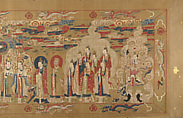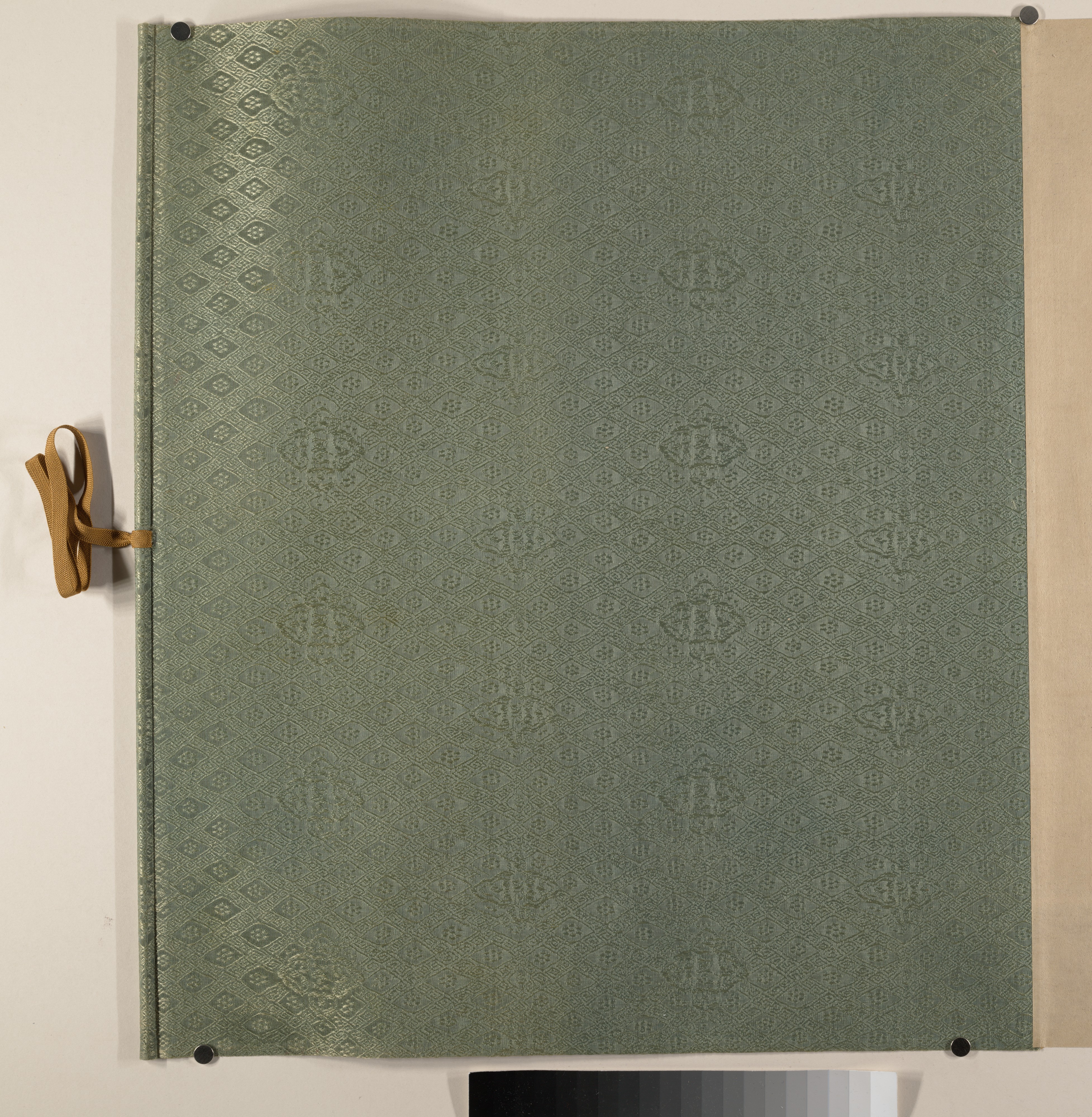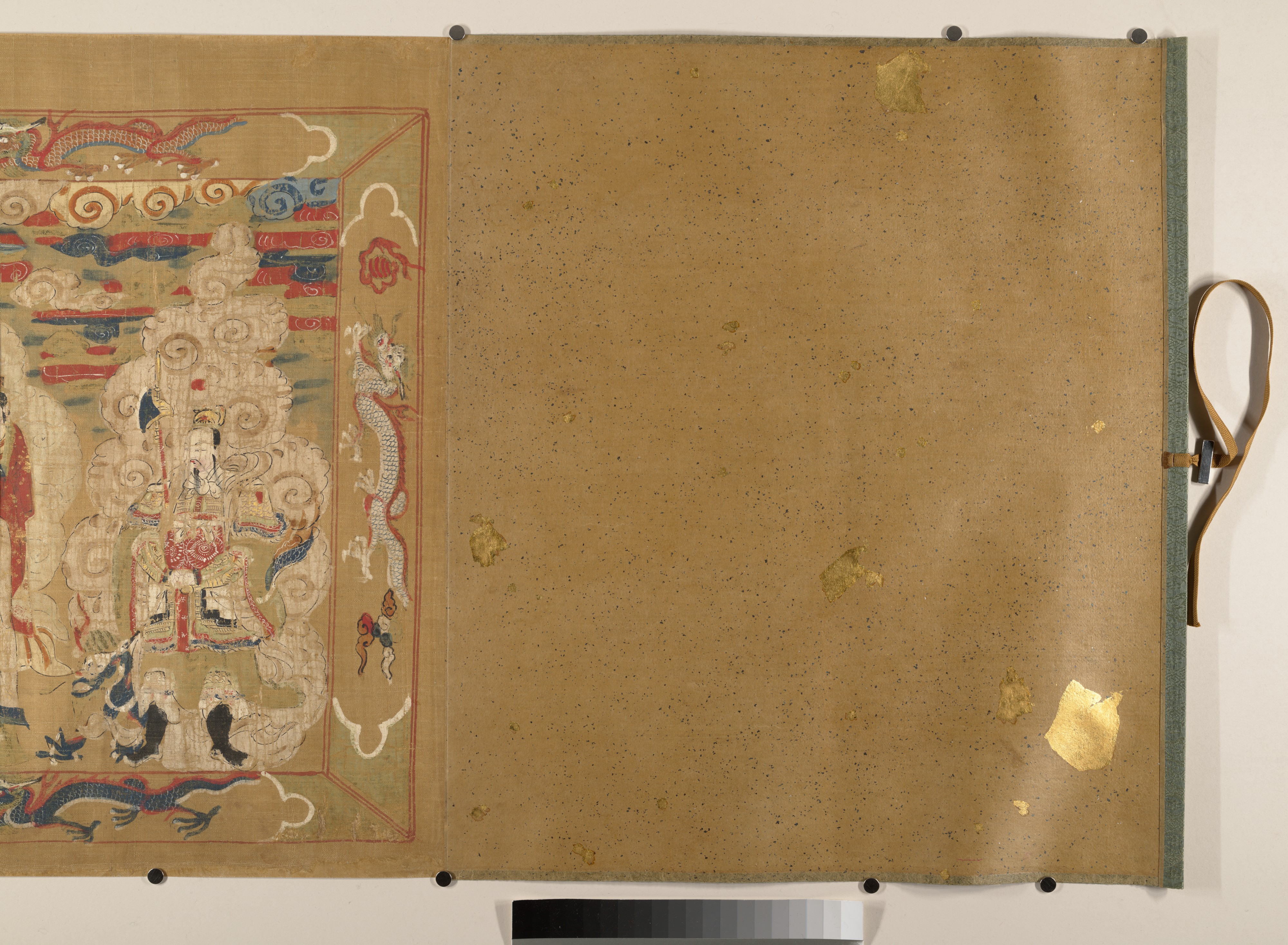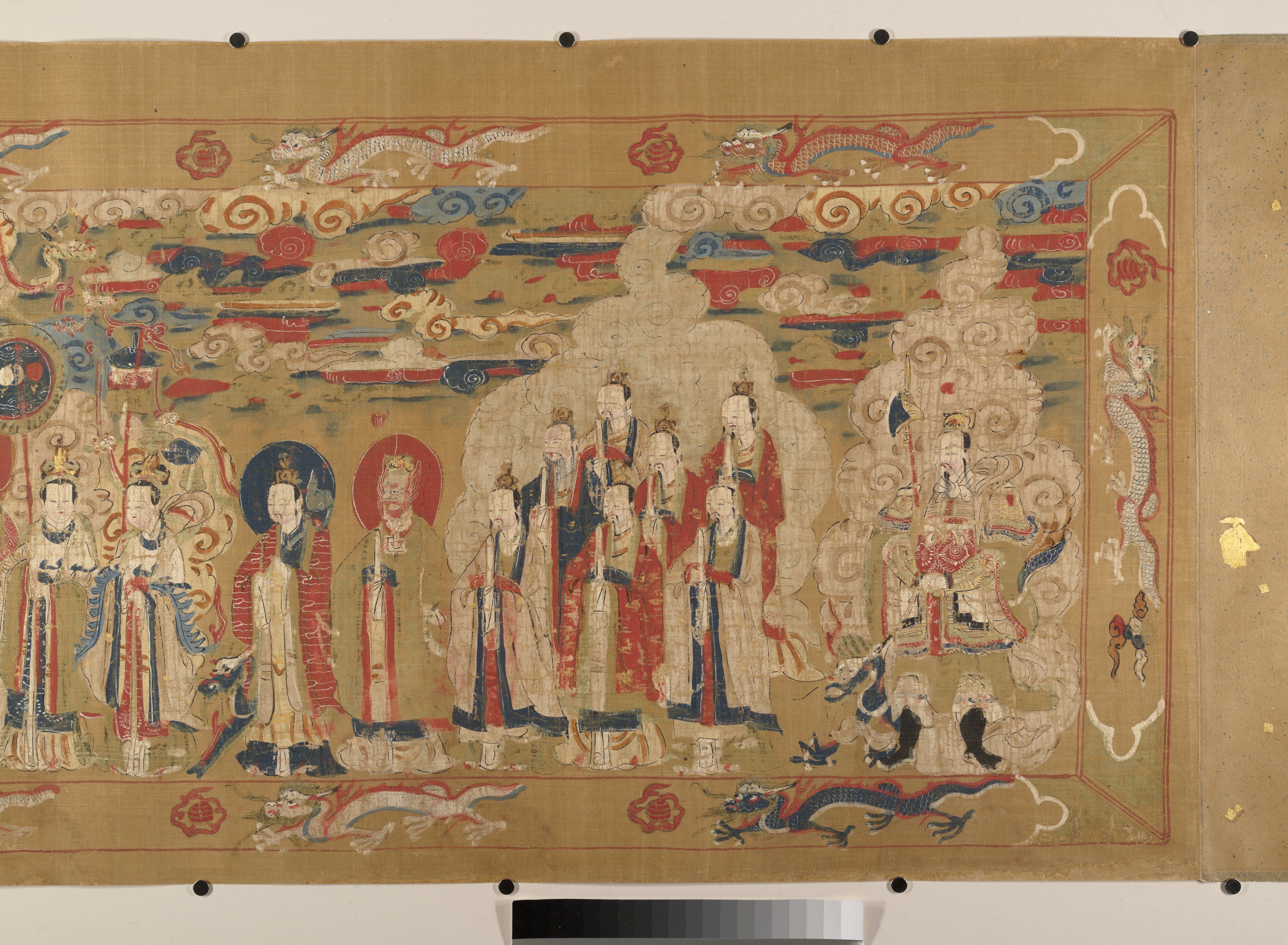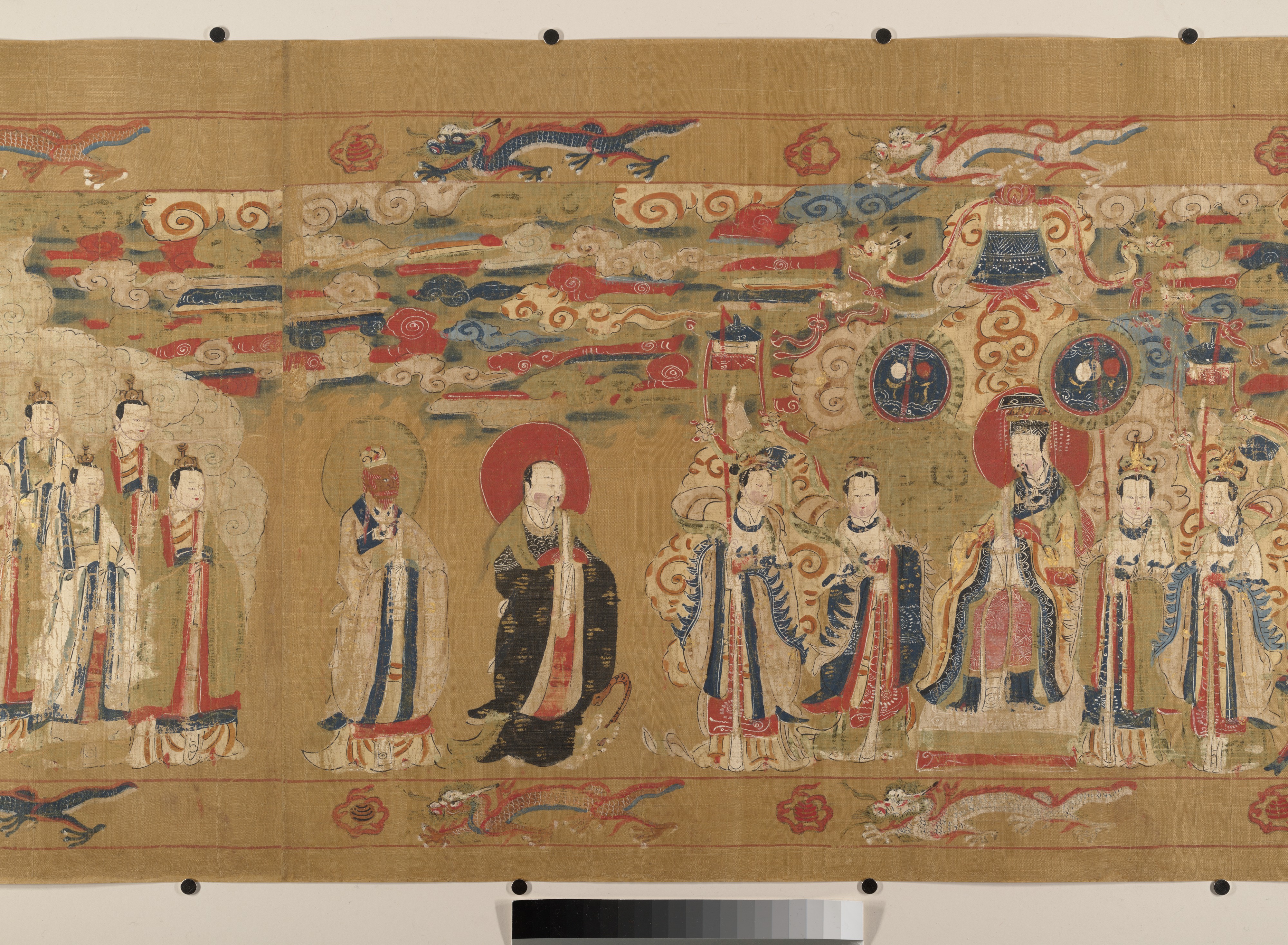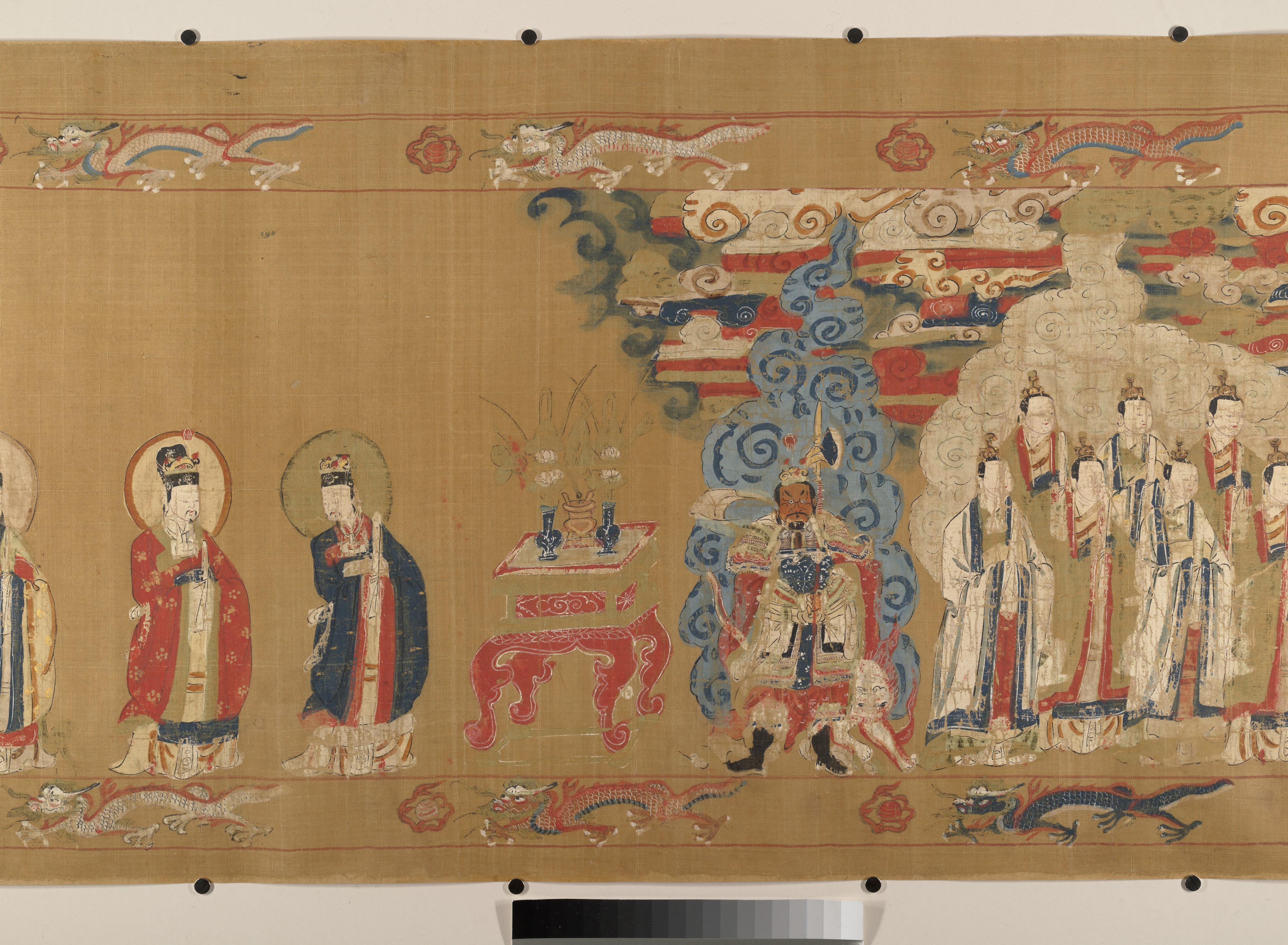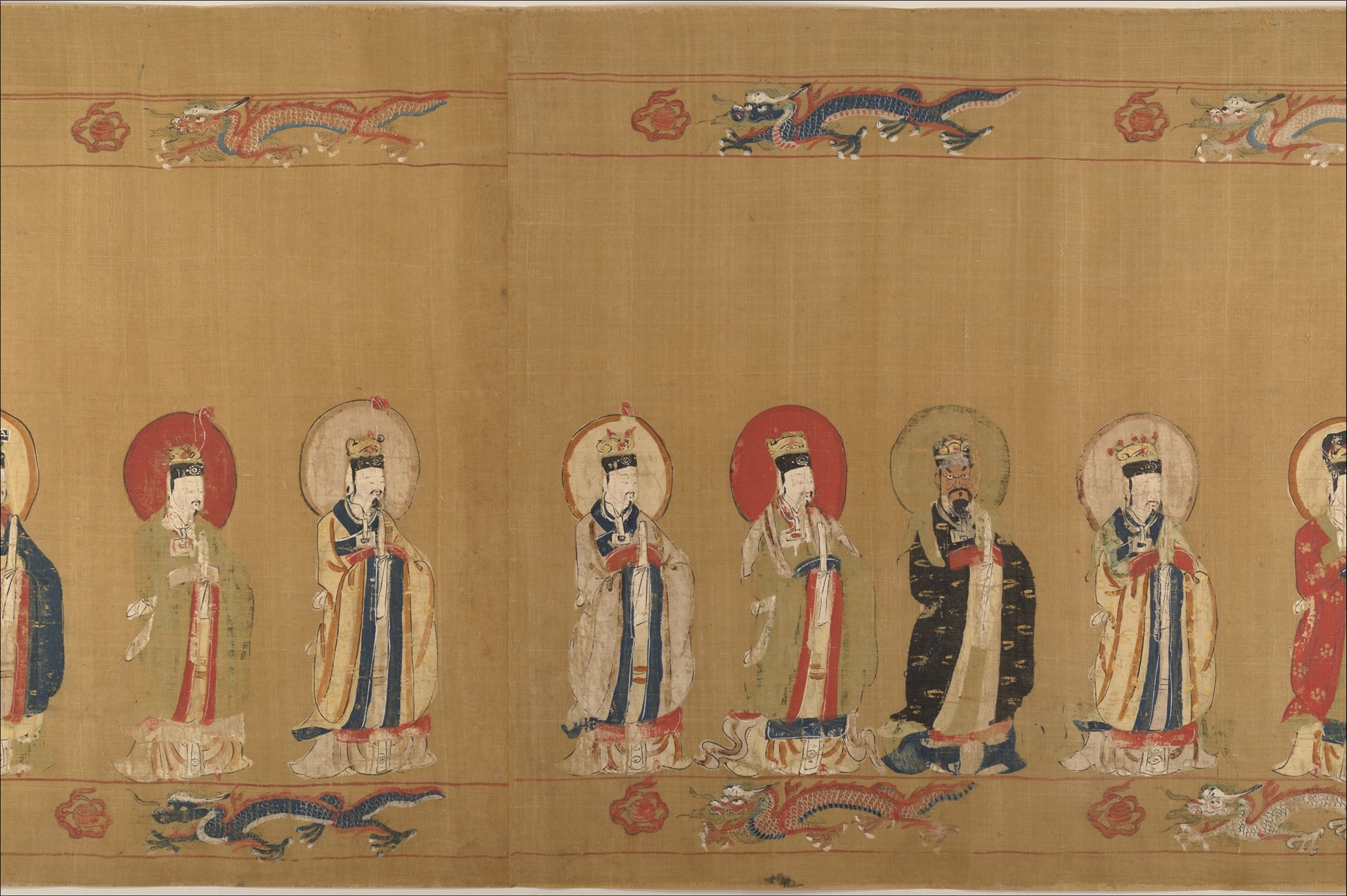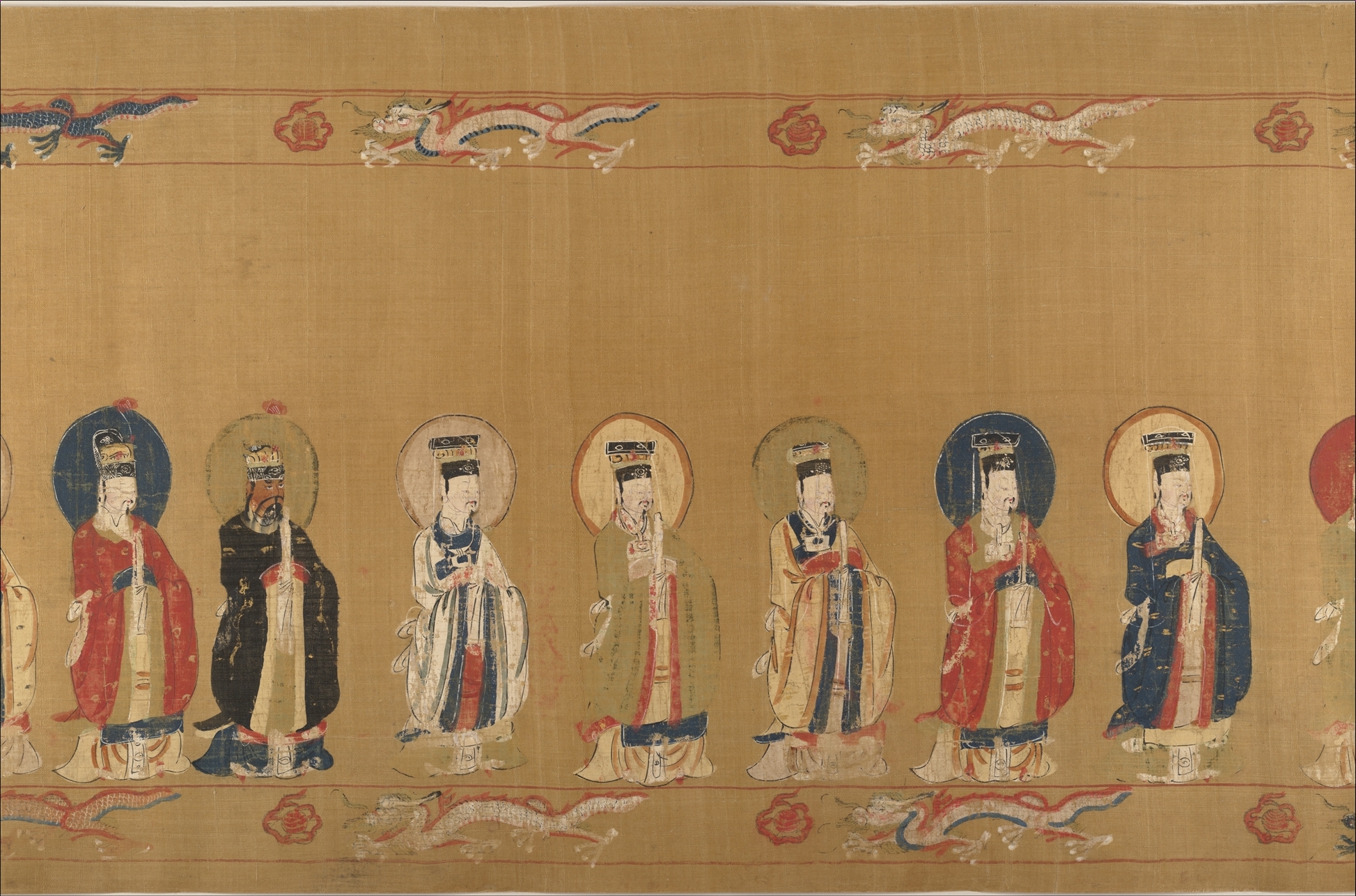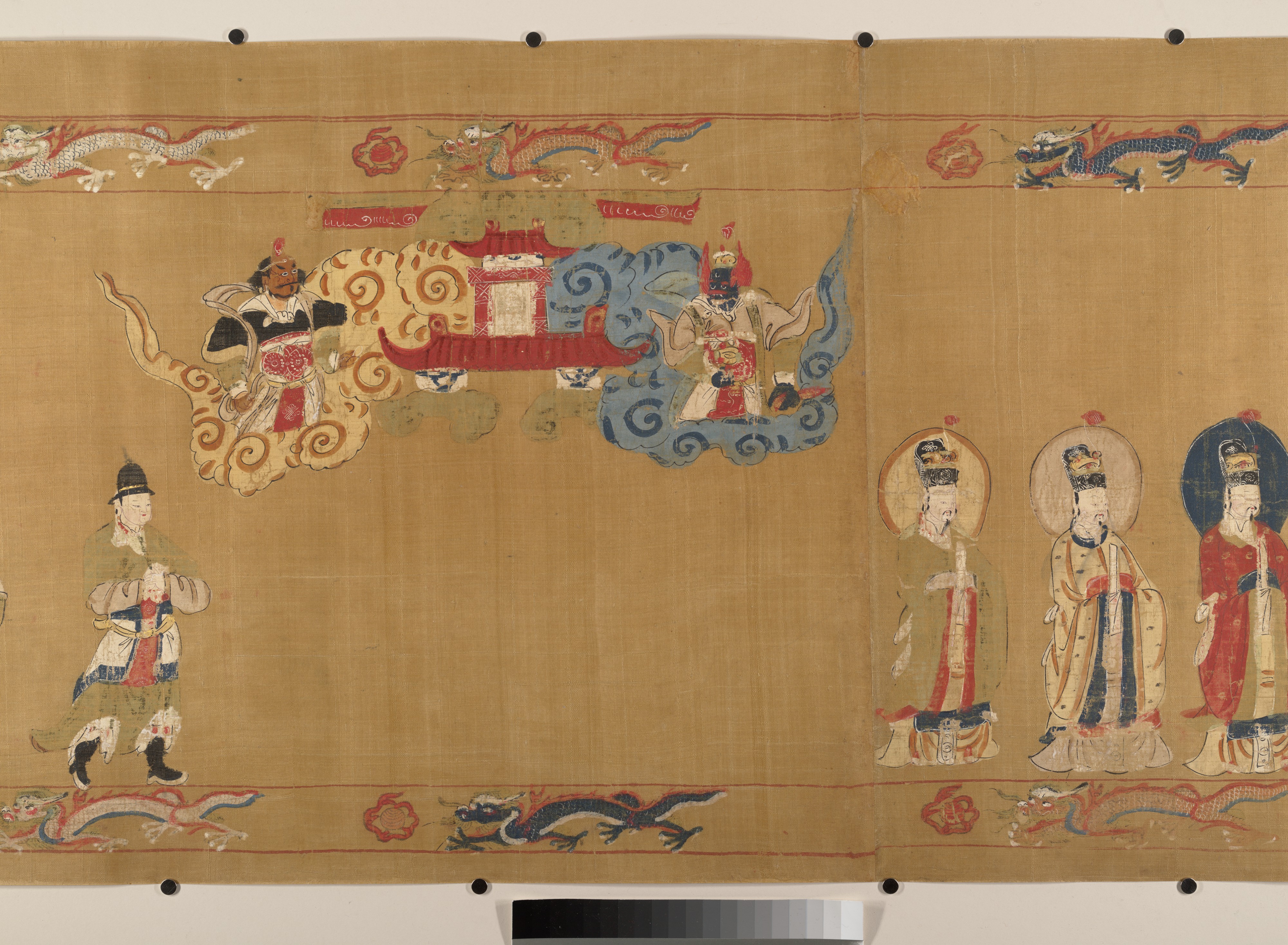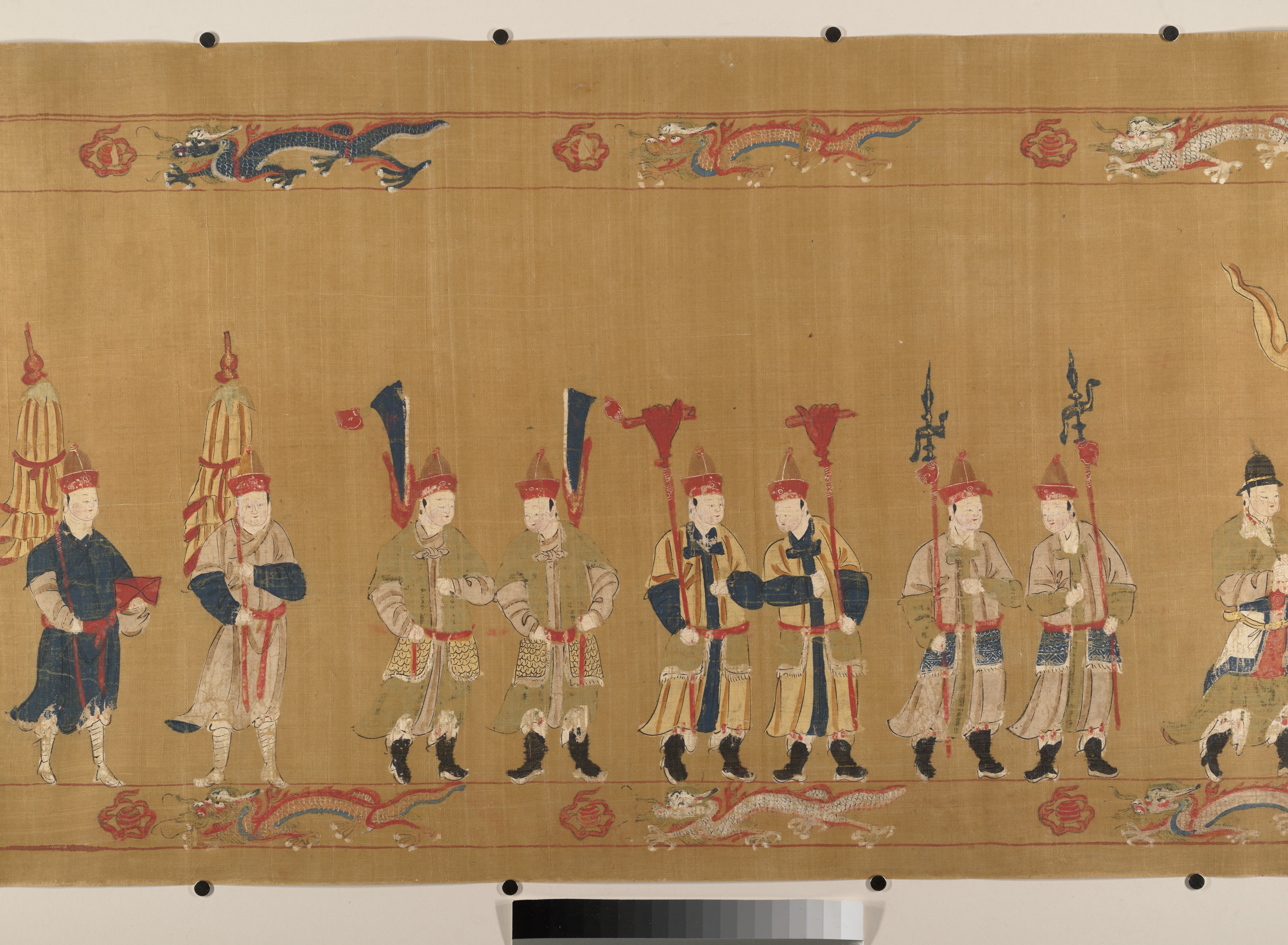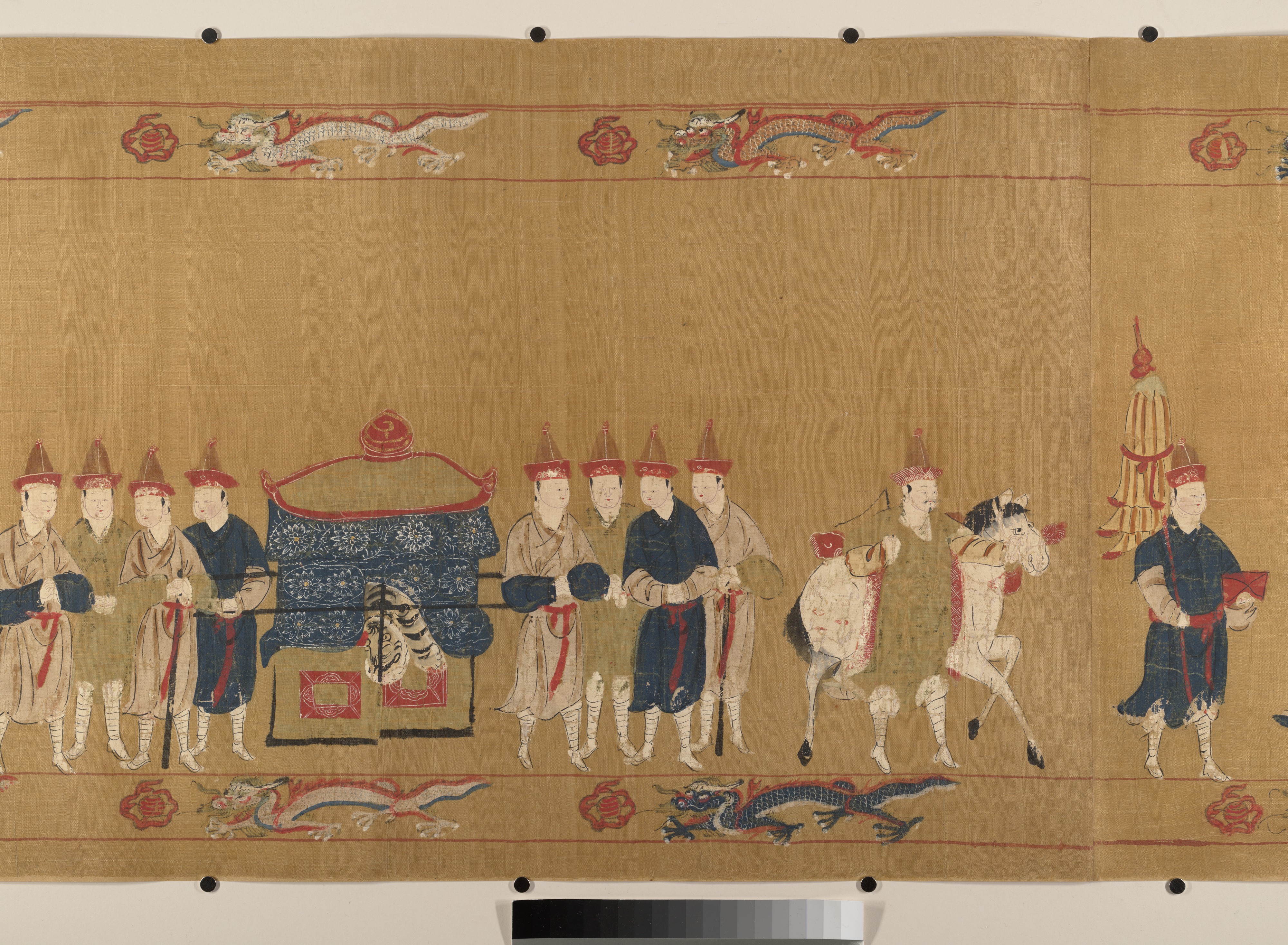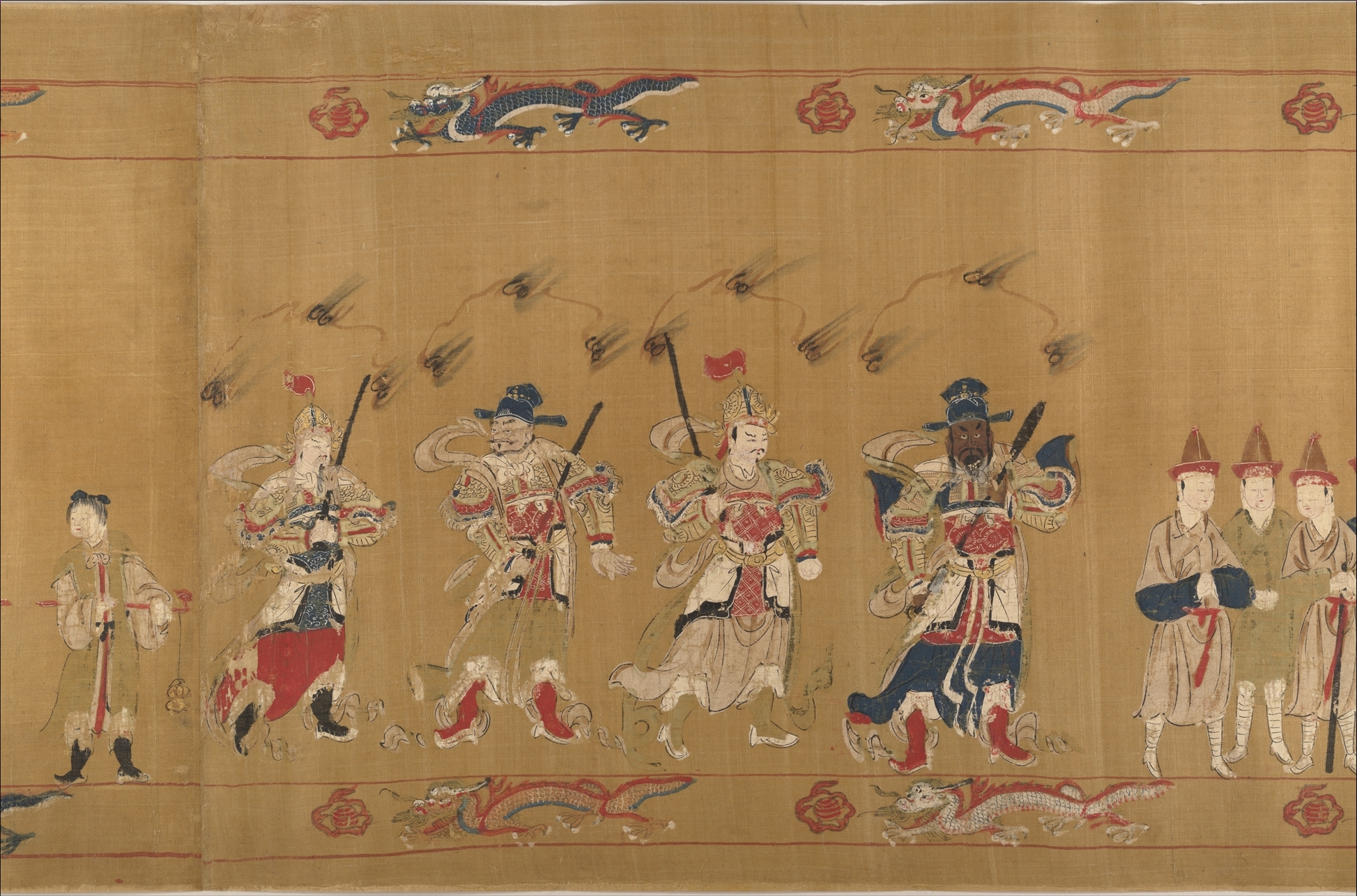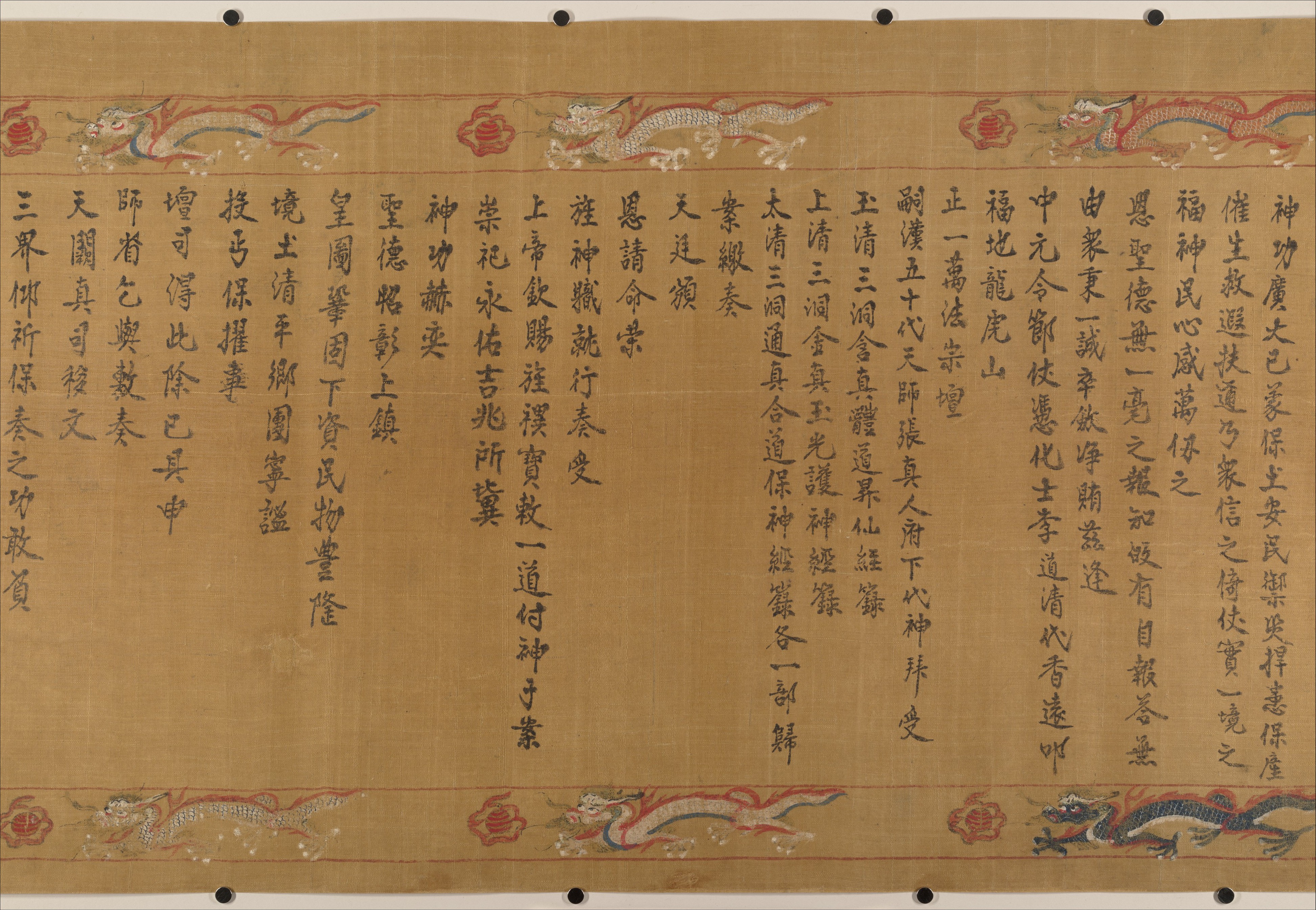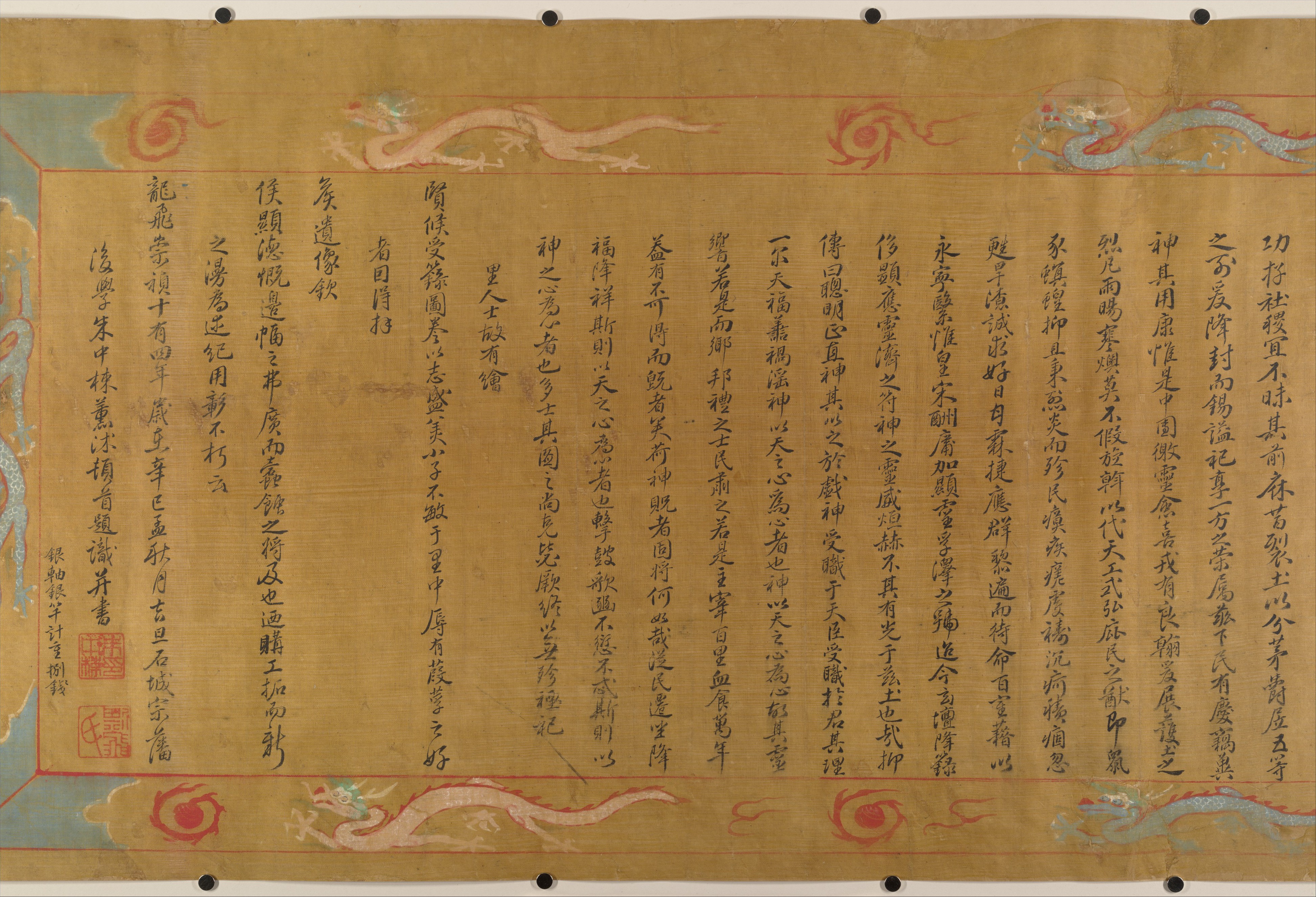Canonization scroll of Li Zhong
Not on view
This painting, an unsigned work of a provincial atelier, is a rare example of popular religious art. Modeled on imperial commendation scrolls, with their ornamental borders of dragons chasing flaming pearls, the scroll illustrates the investiture of a local god into the Daoist pantheon. The first half of the scroll depicts the court of the Jade Emperor, supreme deity of popular Daoism. The enthroned emperor is flanked by four female attendants, four high officials, and two constellations of star deities, as well as guardians of the east and west, who are accompanied by their directional emblems, the dragon and tiger. Approaching this assembly is a file of haloed deities who have entered the sacred precincts through a pair of heavenly gates. The second half of the scroll depicts the entourage of the local god, including standardbearers with emblems of his status, a white charger, a palanquin with eight porters, guardians of the four directions, four attendants carrying incense burners, and figures bearing his sword and seals. This procession ends with a depiction of the local god, shown larger than life to emphasize his importance. In the sky above, a heavenly messenger appears bearing the scroll of the god's investiture.
Following the painting is a transcription of the petition made to the Celestial Master of the Orthodox Unity sect, headquartered at Dragon-Tiger Mountain (Longhu shan) in Jiangxi Province, requesting that the local god, Li Zhong, be recognized as a member of the pantheon. The petition is dated A.D. 1157, but both it and the painting are likely to be copies, probably created during the Ming dynasty. The terminus ante quem for the scroll is established by two appended colophons, both dated 1641.
Due to rights restrictions, this image cannot be enlarged, viewed at full screen, or downloaded.
This artwork is meant to be viewed from right to left. Scroll left to view more.
